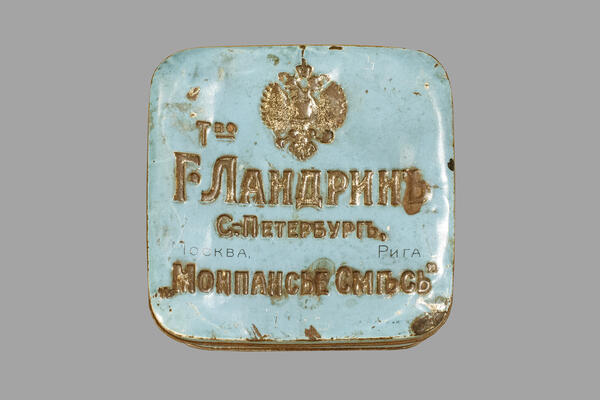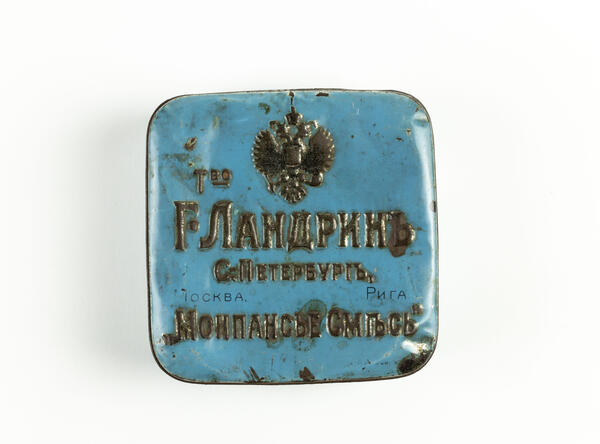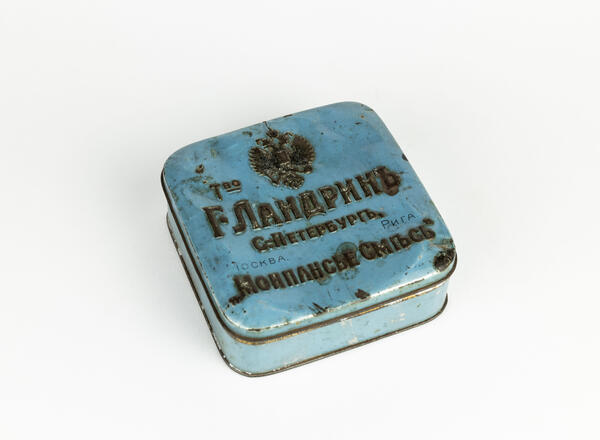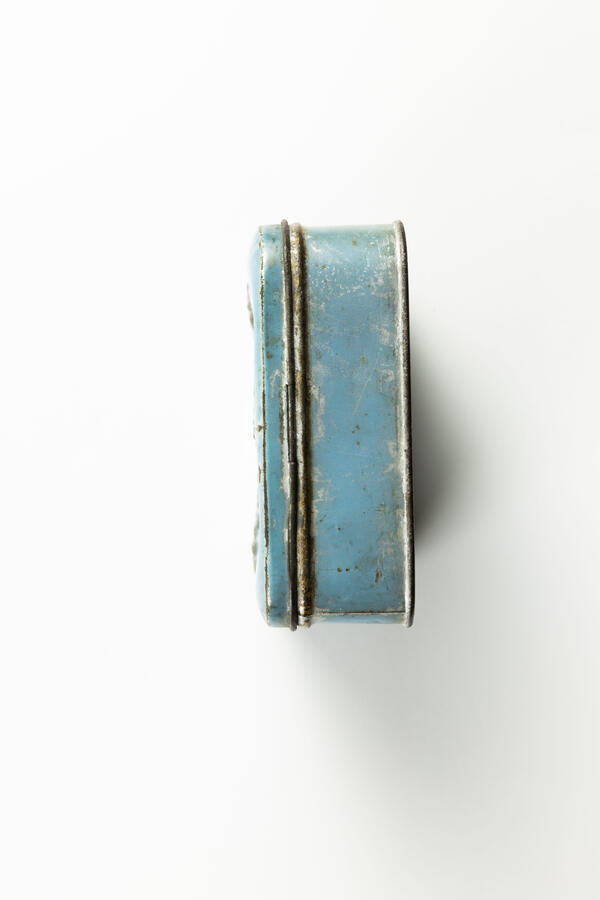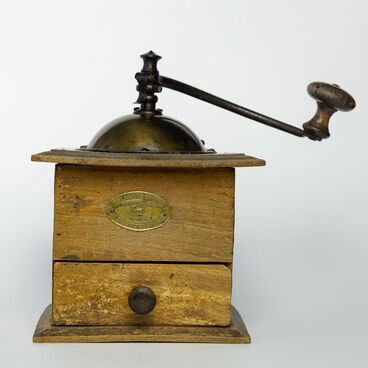The history of caramel in Russia began in the 14th century, and the Russian word for hard candy “ledenets” was derived from the word “lyod”, meaning ice, as these candies were reminiscent of ice. Lollipops were traditionally made in the shape of cockerels, bears and horses, and were available in several colors. Cylinder-shaped candies with mint or barberry flavor were also very popular. The most affordable candies in the 19th century were small multicolored Montpensier caramels.
Their name is redolent of the atmosphere of the French court of Louis XIII, where it was fashionable to treat oneself to small fragrant sweets. The king’s niece, the Duchess of Montpensier, was known in Russia through the novels of Alexandre Dumas. The Glazov Museum displays a tin candy box “Montpensier candies. Landrin’s Partnership”, made in the early 20th century.
The factories of Georg Landrin were popular in St. Petersburg, Moscow and Riga. They were official suppliers of sweets to the Imperial House of Romanov, and after the Russian Revolution they became part of the confectionery enterprise “Azart”, which still exists today. There is a St. Petersburg urban legend about the founder of the Montpensier Factory and creator of the sweets, Georg Landrin. There once lived a young pastry chef by the name of Landrin. He knew how to make candy like no other: they were red-and-white lollipops. He wrapped these candies in paper wrappers and took them to the merchant Eliseyev’s store for sale. One day Landrin forgot to wrap a batch of sweets, and Eliseyev refused to take them. Upset, Fyodor Landrin sat down on a bench next to a gymnasium, and the gymnasium students who ran past quickly bought all the sweets.
The pastry chef began to come to the gymnasium with his lollipops every day. They were inexpensive and quickly gained popularity among young people. Every time during the break, the schoolgirls cried for the pastry chef as they were not allowed to leave the gymnasium before the end of their lessons. The cries “Landrin, Landrin!” became so familiar to everyone around them that people started calling the lollipops “landrinki”. The successful pastry chef soon opened his shop in the center of the capital and changed his name to a more euphonious one — “Georg Landrin”.
Their name is redolent of the atmosphere of the French court of Louis XIII, where it was fashionable to treat oneself to small fragrant sweets. The king’s niece, the Duchess of Montpensier, was known in Russia through the novels of Alexandre Dumas. The Glazov Museum displays a tin candy box “Montpensier candies. Landrin’s Partnership”, made in the early 20th century.
The factories of Georg Landrin were popular in St. Petersburg, Moscow and Riga. They were official suppliers of sweets to the Imperial House of Romanov, and after the Russian Revolution they became part of the confectionery enterprise “Azart”, which still exists today. There is a St. Petersburg urban legend about the founder of the Montpensier Factory and creator of the sweets, Georg Landrin. There once lived a young pastry chef by the name of Landrin. He knew how to make candy like no other: they were red-and-white lollipops. He wrapped these candies in paper wrappers and took them to the merchant Eliseyev’s store for sale. One day Landrin forgot to wrap a batch of sweets, and Eliseyev refused to take them. Upset, Fyodor Landrin sat down on a bench next to a gymnasium, and the gymnasium students who ran past quickly bought all the sweets.
The pastry chef began to come to the gymnasium with his lollipops every day. They were inexpensive and quickly gained popularity among young people. Every time during the break, the schoolgirls cried for the pastry chef as they were not allowed to leave the gymnasium before the end of their lessons. The cries “Landrin, Landrin!” became so familiar to everyone around them that people started calling the lollipops “landrinki”. The successful pastry chef soon opened his shop in the center of the capital and changed his name to a more euphonious one — “Georg Landrin”.

